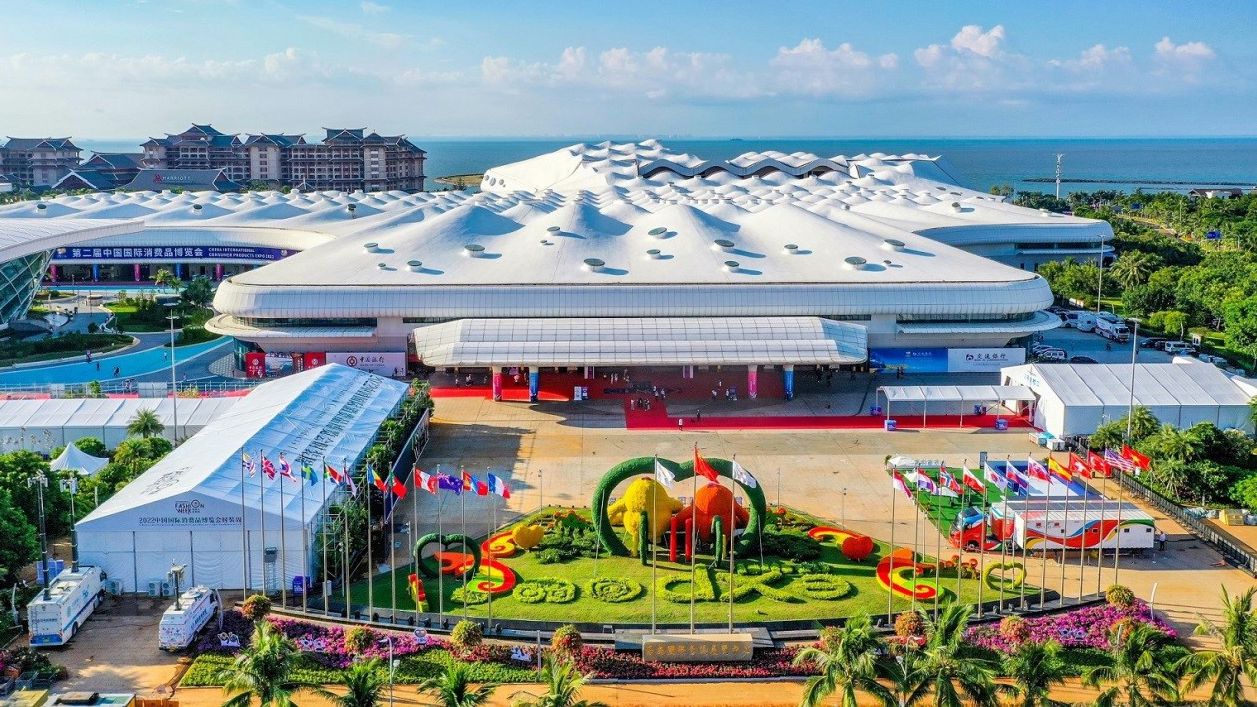China-built modern railway helps unleash Kenya's economic potential
NAIROBI, Aug. 5 (Xinhua) -- Gloria Chahonyo was in her element as she recounted how the China-built 480 km Mombasa-Nairobi Standard Gauge Railway (SGR) has enlivened the catering business where she has worked for two decades.
Chahonyo, now operations manager at Bamburi Beach Hotel, located on the pristine northern fringes of Kenya's coastal city of Mombasa, noted that since its launch five years ago, the modern railway has boosted tourist arrivals at the voguish getaway.
"The SGR is a great idea, it opened up the coastal tourism circuit. We are receiving many local and foreign tourists now that the SGR has made traveling to Mombasa faster and affordable," Chahonyo told Xinhua in a recent interview.
Pointing at crowds of mostly local tourists relishing an evening walk at the scenic beachfront, Chahonyo believed that the seamless mobility is largely underpinned by the China-built commuter train service.
INJECTING ECONOMIC VITALITY
Launched on May 31, 2017, the Mombasa-Nairobi SGR, financed mainly by China and constructed by China Road and Bridge Corporation (CRBC), has injected fresh vitality into Kenya's economic pillars, including tourism, manufacturing and agriculture, through enhanced mobility of passengers, goods and services.
James Macharia, Kenya's cabinet secretary at the Ministry of Transport, Infrastructure, Housing and Urban Development, praised the SGR, saying: "It is an extremely good experience in the last few years, it is the only railway that broke even within about five years of operation, actually about six months ago."
"We can expect a lot more profitable operations going forward," he said.
Philip Mainga, the managing director of state-owned Kenya Railways Corporation, noted that the SGR has become a dominant player in Kenya's pursuit of inclusive growth.
Mainga believed the modern railway has revolutionized transportation of passengers and bulk cargoes along its corridor, stimulated commerce and investments besides fostering skills transfer and job creation for local youth.
"When you look at what the SGR has done in the last five years, it has contributed to growth of GDP and per capita income in the country," said Mainga.
As a signature project of China-Kenya bilateral cooperation and a critical component of the Belt and Road Initiative, the Mombasa-Nairobi SGR is projected to contribute 2 to 3 percent to the country's GDP, according to Mainga.
The modern railway has transported 20 million tons of cargo and about 8 million passengers in the last five years, elevating Kenya's status as a regional manufacturing, trade and logistics hub, said Mainga.
He added that as a strategic infrastructure project, the SGR is aiding the realization of Kenya's two flagship socio-economic transformation blueprints -- the Vision 2030 and the Big Four Agenda.
Cosmas Makewa, the station master at the Mombasa SGR terminus, noted that its positive impact on the local economy has been phenomenal. "The SGR has been a game changer to our economy. It has reduced the cost of importing goods and transporting them to inland container depots, to the benefit of manufacturers and consumers."
Beatrice Mbiku, a female cashier at a nearby restaurant, said that a large influx of travelers has made her business thrive and create additional jobs for local youth.
BOOSTING REGIONAL INTEGRATION
The Mombasa-Nairobi SGR and the additional 120-km Nairobi-Naivasha SGR that was launched in October 2019 have revolutionized the hauling of bulk cargoes to the hinterlands, says Edward Opiyo, the terminal manager at Nairobi Freight Terminals Limited, a logistics firm.
Opiyo said that it takes eight hours to transport bulk cargoes like raw materials from the Mombasa port to an inland container depot in Nairobi using the SGR freight service, as opposed to around two days using the century-old Meter Gauge Railway constructed by the British colonialists.
"The SGR is an important part of the Northern Corridor which connects the port of Mombasa to hinterland destinations including in neighboring countries. It provides the most practical means of moving goods in large volumes," said Opiyo.
He added that thanks to the modern railway, logistics firms have built a cordial relationship with major clients like importers, since they are able to transport bulk cargoes in a speedy, cheaper, efficient and environmentally-friendly manner.
Besides easing congestion at the Mombasa port, the Mombasa-Nairobi-Naivasha SGR has reduced transit hours and the cost of hauling bulk cargoes to neighboring landlocked countries, injecting fresh vitality into regional supply chains, said Opiyo.
According to Mainga, the SGR is offering an economic lifeline to East African Community member states through speedy ferrying of bulk cargoes.
The SGR has been linked with the meter gauge railway to facilitate the hauling of bulk cargoes from Naivasha Inland Container Depot to Malaba town, which borders Uganda, for onward ferrying to the wider east and central African region.
ENHANCING LOCALIZATION
Harrison Kinyanjui, a 26-year-old economics major, has benefited from rigorous training provided by Afristar Railway Operation Company, the SGR operator, since he was recruited by the firm in February 2017.
Thanks to the much-needed training on railway operation and management from Chinese tutors, Kinyanjui progressed quickly to become the first Kenyan to work at the SGR Dispatch Center in Nairobi.
"Our work is to organize train operations using a centralized traffic control system in the Dispatch Center, which is the brain and heart for all SGR train operations," said Kinyanjui, who is currently the assistant superintendent of the dispatch center.
"The Chinese experts have taught us very well. They now have the confidence to leave us to work independently and we are very, very proud that we came here not knowing anything about train dispatching but we are now very competent," he added.
Kinyanjui said that besides receiving professional training, he has also gained critical life inspirations from the Chinese colleagues.
John Pius, a 32-year-old mechanical engineering major, also benefited from the skills transfer. He joined the first cohort of independent Kenyan locomotive drivers in February.
During its five years of safe operation, the modern railway has provided a platform for Kenyans to hone their skills, grow their careers and earn a decent income.
"Now our people are able to run the operations, to drive their locomotives, to carry on with signal work, to repair and maintain our wagons," Mainga said.
Photos
Copyright © 2022 People's Daily Online. All Rights Reserved.









